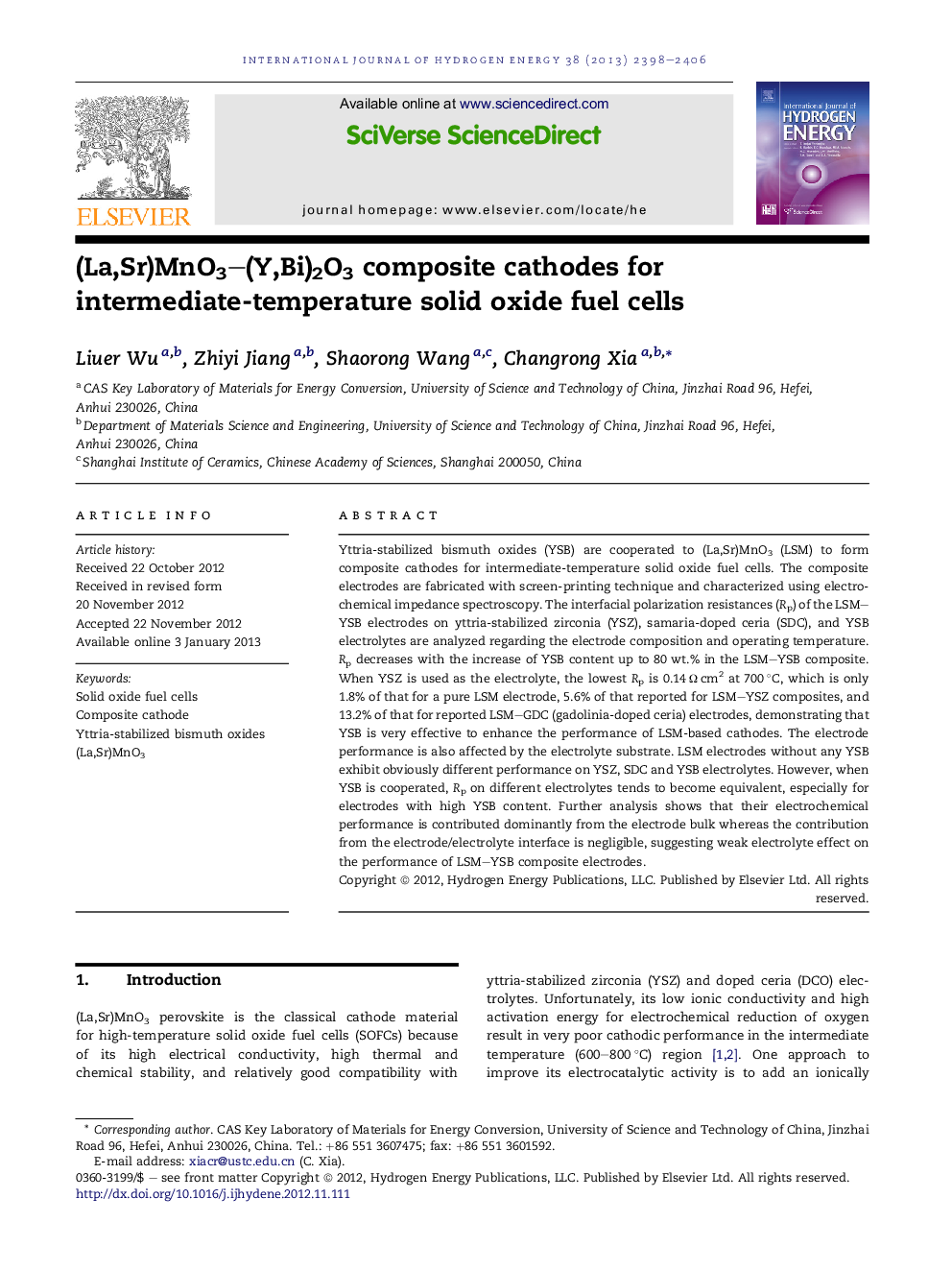| Article ID | Journal | Published Year | Pages | File Type |
|---|---|---|---|---|
| 1274105 | International Journal of Hydrogen Energy | 2013 | 9 Pages |
Yttria-stabilized bismuth oxides (YSB) are cooperated to (La,Sr)MnO3 (LSM) to form composite cathodes for intermediate-temperature solid oxide fuel cells. The composite electrodes are fabricated with screen-printing technique and characterized using electrochemical impedance spectroscopy. The interfacial polarization resistances (Rp) of the LSM–YSB electrodes on yttria-stabilized zirconia (YSZ), samaria-doped ceria (SDC), and YSB electrolytes are analyzed regarding the electrode composition and operating temperature. Rp decreases with the increase of YSB content up to 80 wt.% in the LSM–YSB composite. When YSZ is used as the electrolyte, the lowest Rp is 0.14 Ω cm2 at 700 °C, which is only 1.8% of that for a pure LSM electrode, 5.6% of that reported for LSM–YSZ composites, and 13.2% of that for reported LSM–GDC (gadolinia-doped ceria) electrodes, demonstrating that YSB is very effective to enhance the performance of LSM-based cathodes. The electrode performance is also affected by the electrolyte substrate. LSM electrodes without any YSB exhibit obviously different performance on YSZ, SDC and YSB electrolytes. However, when YSB is cooperated, Rp on different electrolytes tends to become equivalent, especially for electrodes with high YSB content. Further analysis shows that their electrochemical performance is contributed dominantly from the electrode bulk whereas the contribution from the electrode/electrolyte interface is negligible, suggesting weak electrolyte effect on the performance of LSM–YSB composite electrodes.
► YSB cooperation is very effective in enhancing the electrode performance of LSM. ► LSM–YSB shows the lowest polarization resistance among various LSM-based cathodes. ► Electrolyte effect on polarization resistance is negligible for LSM–YSB electrodes.
